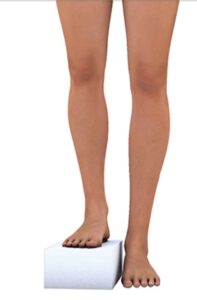Research
Before deciding to perform the surgery, doctors need to carry out a clinical examination for the patient to learn about the patient’s medical history, including reproductive history, physical and stature development during adolescence, puberty, hormone levels, childhood illnesses, genetic diseases, etc. In addition, doctors will assess the patient’s psychological status, aspirations and desires.
After this, the patient will receive subclinical examination and specialized examinations to exclude skeletal and other systemic diseases with contraindications to limb lengthening. Patients are also consulted by the doctor, receiving clear explanation on the surgical procedure, hospital stay, treatment process during hospital stay and after discharge, duration of treatment, possible accidents and complications. Patients need to understand and be ready, including the process of post-operative exercising and rehabilitation.
Methods
Regarding the methods of surgery, the classic technique in the past would be: bone cutting, each leg will be pierced with 8 nails through the bone and external frames will be installed to slowly stretch the legs at a rate of 1mm per day. Thus, if the patient wishes to stretch for 7cm, it will take 70 days. When the length increased is 7cm, the patient still has to wear the frames and wait for 7 months for the bone to get stronger, then the frames can be removed. The patient has to wear the frame for a long time up to 10 months (40 days per cm), which is cumbersome and bulky in daily life.
Nowadays, thanks to the latest innovations, before the cutting of the bone, the doctors put a nail in the medullary cavity, and only use 4 small nails to pierce both ends of the bone. When the bone is stretched to full length, the frame will be removed. The nail located in the cavity will play the role of a fixator while waiting for the bone to solidify. Therefore, with this new method, the duration of external fixation has been shortened to 25% (11 days per cm) and the early removal of the frames facilitates the patient’s quick return to normal life and work. At the same time, the number of scars and their sizes are also smaller.
Subjects
Limb lengthening is prescribed to 2 groups of subjects:
To subjects with leg length discrepancy: resulted from the sequelae of polio, sequelae of trauma or resection of osteosarcoma causing the shortening of bones and legs, or birth defects. Usually only applied to cases with the difference of greater than 1.5 cm. With a small difference, it can be adjusted by easily adding a simple pad to the shoe sole.

To subjects with short stature: for people of short stature, men under 165cm, women under 155cm (according to the 2020 census data, the average height of young Vietnamese is currently 168cm for men, and 1m58 for women), or those who are above average height, but have desire to be taller and more confident in life, especially for students who wish to live and work abroad.
The appropriate age range to perform leg lengthening: the age range of 18 – 35 is the most ideal, because at that time, the height has stopped increased; and the younger the patient is, the faster his/her bone regeneration will be. After the age of 35, the bones begin to age, so it is not suitable for prolonged surgery. Over 40 years old, this surgery should not be performed, except for cases of short legs


Getting to know Limb Lengthening Procedure
Consultation
DIRECTLY
FROM DR. DOAN
Success stories



